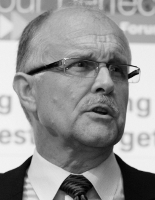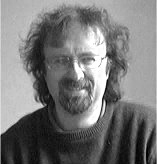
 Using organ-on-a-chip technology to reduce animal testing
Using organ-on-a-chip technology to reduce animal testing
Objectifs du cours
To provide a state of the art review of current methods for in-vitro testing of safety and efficacy of chemicals (including drugs) as well as studying disease and more general medical research.
To provide a detailed description of the latest advances in the technologies used for cell culture and the monitoring of cell function.
To describe the barriers and drivers to change, particularly the reduction and replacement of animal testing ( ethical, scientific, economic ).
To describe the technical challenges in creating and maintaining cell culture in a way that mimics the human environment (ie physiologically relevant models).
To analyse the specific challenges of scaling in-vitro models to the micro-scale needed to create the organ or human-on-a-chip.
Public cible
Scientists and Managers working in the pharmaceutical, nutraceuticals, cosmetics, tobacco or chemical industry where animal testing has been or still is used to test product safety and efficacy.
Researchers working in academia or industry developing new methods of in-vitro testing.
Contenu
Applications and markets where animal testing is used.
Advantages and disadvantages of using animals compared to in-vitro or in-silico methods.
The technologies used for in-vitro testing
- Sources of cells
- Culture media
- Cell culture chambers
- Scaffolds and other 3D approaches
- Assays and analysis methods
The evolution of lab-on-a-chip, organ-on-a-chip and human-on-a-chip technologies
Processes for gaining regulatory approval for new methods of testing safety and efficacy
The economics of testing using animals, in-vitro or in-silico models
Sources of research funding for the development of alternative methods
Companies and organisations developing alternative methods
Sources of further information (conferences, workshophs, web sites)
Enseignant(s)

Dr Malcolm Wilkinson. BA (Hons) in Physics from Keble College, Oxford, MSc from Southampton University and PhD from Middlesex University, London. He has contributed at the leading edge of technology for over 35 years and is well-known for his expertise in the emerging fields of biotechnology and nanotechnology. He has had experience across all business functions in high technology industries in the UK, USA and Europe and served at Board Level in three high technology companies. Dr Wilkinson has a track record of success in bringing new technology from R&D through to volume production in both large and small company environments. He has the industrial / business / socio-economic background needed to understand the mechanisms that may affect the exploitation potential of the results of EU or UK Government funded projects. He has had extensive experience in European Union Framework Projects as an Assessor, Reviewer, Coordinator and Project Partner. He has been a visiting Lecturer for FSRM, Neuchatel, Switzerland, on the subject of Micro and Nanotechnology in Biomedical Engineering for over 10 years. He is co-author on several papers on in-vitro models of toxicity and a contributing editor of a recently published book on In-Vitro Testing. Dr Wilkinson is a champion for the use of leading edge technology to replace animal testing for the development of safe drugs, nutraceuticals, chemicals and cosmetics.

John Alderman Consultant (UK) was awarded a BSc in Chemistry from Bristol in 1978 and while working at Plessey Research (Caswell) (1978-1990) was awarded MSc in Microelectronics from Bangor, University of Wales in 1982. After 12 years developing processes for integrated circuit fabrication he joined the NMRC (later Tyndall National Institute) in 1990 where until the end of 2000 he has collaborated on the development of MEMS and micro systems based "smart sensors" and “Lab-on-a-chip” techniques for chemical and biological sensing applications. He was a member of the co-ordinating board of the initial phase of NEXUS between 1992 and 1995 focused on the promotion of the emerging Microsystems developments and for 4 years between 1996 -1999 he acted as the Irish contact as part of the EU Europractice MST initiative for the promotion of awareness and aid in the source of supply of these new developments to industry. From the beginning of 2001 until 2010 he set up and ran a Bionics team specifically looking at the possibilities to be derived from direct interaction between the cellular and microelectronic worlds and was one of the founders of the greater Life Sciences Interface grouping in the NMRC/Tyndall. Projects included a neural array pick up using ISFET’s and micro electrodes with direct cellular cultures, structures and micro chambers for cellular culture monitoring and several biomedical orientated devices such as improved coils for inductive coupling in an implantable drop foot stimulator, cuff electrodes for nerve stimulation / recording and the fabrication of flexible retinal stimulation devices. He has had several of his patents licensed to spin out companies (e.g. Luxcel and SensL).
| Date et Lieu (jj.mm.aaaa) | Ce cours n'est pas agendé en ce moment. Veuillez nous contacter en cas d'intérêt |
| Coût (EARLY BIRD) | CHF 1'300.00 |
| Coût | CHF 1'500.00 |
| Langue | English |
| Inscription | Deux semaines avant le cours |
| Organisation | FSRM, Fondation suisse pour la recherche en microtechnique |
| Informations et inscription | Gilles Delachaux, FSRM, e-mail: fsrm@fsrm.ch |
